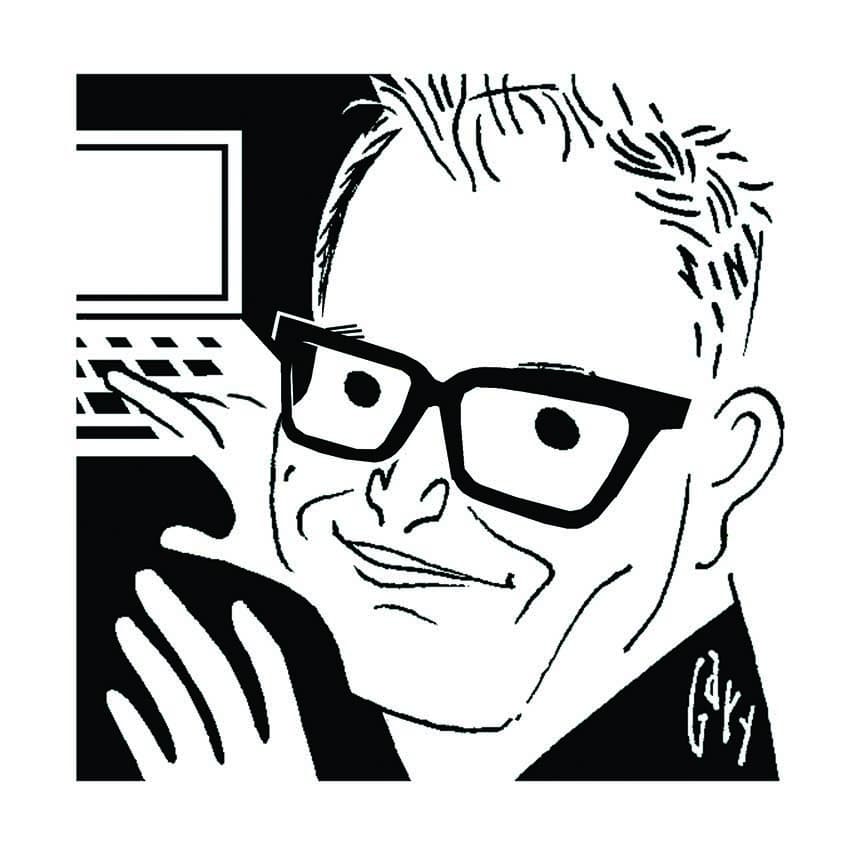Editor's letter
“I’m ushered out past the vertiginous Red Bull trophy cabinet”

The interview has finished and arguably the greatest race car designer of the modern era gets up and wanders over to the window of his office.
“Well, if we are finished, then I might erm, uh, just get on with some things,” says Adrian Newey.
No one is going to disagree. So, while we pack up our things, Newey picks up a 2B pencil and, literally, goes back to the drawing board. It is a pretty big board – over a metre long – and it runs down the side of his neat office.
Large scrolls of A2 paper are carefully stacked in one corner, rolled into tubes ready to be pored over later (I’ve read that he has two assistants charged with converting the sketches into digital form) in another department at Red Bull’s sprawling Formula 1 operation. On one wall is a Tim Layzell artwork of Newey’s Ford GT40. On the other wall a photograph of Donald Campbell and his Bluebird land-speed record car, which reached a speed of 403mph in 1964 and was the first car properly to use ground effects.
With his back to me, Newey, in jeans and trainers, quietly sketches, smoothly running the right-angle ruler across the board. The New Yorker magazine once referred to Newey as the Michelangelo of racing design, in which case here in his office in Milton Keynes, I feel privileged to watch an artist at work. It is an incredible moment, but all too soon I am ushered out, past Christian Horner in the glass-walled office next door, past the vertiginous Red Bull trophy cabinet on the way outside.
An hour earlier, Ed Foster and I had sat down to record the first in a series of new podcasts, which will feature some of the greatest engineers this country – or indeed any other – has known. It will focus not just on their careers and their work, but also offer insights into the drivers that they worked with. Each podcast, which will be coming soon to our website, will feature one engineer and the programme includes the likes of Patrick Head, Frank Dernie, Gordon Murray and Tony Southgate. But somehow it was fitting that the first one we recorded (with the ever cheerful and professional Alan Hyde at the sound controls) was Newey.
His record is remarkable. Starting out with Fittipaldi Automotive in the 1980s, he moved to March and then Williams, before heading to Ron Dennis’s McLaren and ultimately Red Bull. Newey-designed cars have won 10 world constructors’ championships and more than 150 grands prix, he remains the only designer to have won the world title with three different teams and along the way he has worked with some of the greatest names in F1 including Ayrton Senna, Damon Hill, Mika Häkkinen, Nigel Mansell and latterly Max Verstappen. His cars have also won two CART championships, he has spannered for Mario Andretti, and was mates with Paul Newman and George Harrison. In 2011, he was awarded an OBE.
Today, success has helped him move from pitlane to more elevated roles within the steel and glass HQs of massive organisations, responsible for hundreds of personnel. He is also by necessity wrestling with thorny political issues from green technology in racing to the new 2021 regulations.
But for me, one of the most interesting things about his remarkable career is that it has spanned a period during which Formula 1 has changed fundamentally, and in virtually every area imaginable. When he started out teams were a few dozen men. The HQ at Fittipaldi was “a small factory unit, a couple of Portakabin offices.” He remembers returning from the pub where the whole team repaired every Friday for lunch and looking for Harvey Postlethwaite, the technical director who would go on to make his mark at Ferrari.
“I found him at his drawing board concentrating hard, head close to the board,” says Newey. “Then I went closer and saw he was fast asleep.” You certainly couldn’t imagine anyone at Milton Keynes doing that. Later, he jokes, he was “junior aerodynamicist and because I was the only one I was also the senior aerodynamicist” and in his brilliant book, How to Build a Car, he describes vividly the atmosphere of those days “teeming with early 1980s chaos and run on a diet of cigarettes, coffee and beige polyester.”
Of course, the fact that teams were small meant that by necessity Newey gained experience across all the various engineering disciplines from aero to design and hands-on race engineering. Such a 360-degree vision of the operation is impossible for young engineers today, who often specialise not just in one department but one niche of one department.
I think it’s fair to say that it is not just Newey’s reliance on a drawing board and pencil that mark him out as being from a different time. And it seems a great shame that as F1 evolves further we may not see the likes of Newey again.
Joe Dunn, editor
Follow Joe on Twitter @joedunn90

